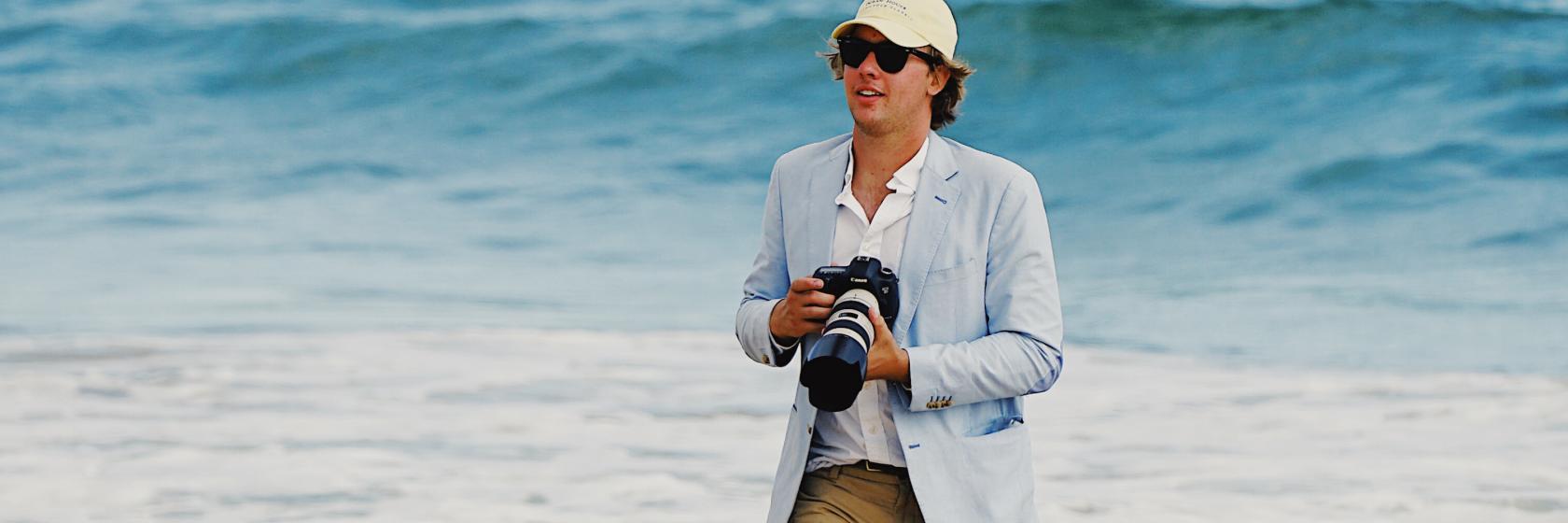We are excited to bring you a guest blog from Naturalist, Mark Bullinger. Once a month, Mark will be sharing his knowledge of South County's natural habitat. This month he kicks things off with an insightful look at osprey.
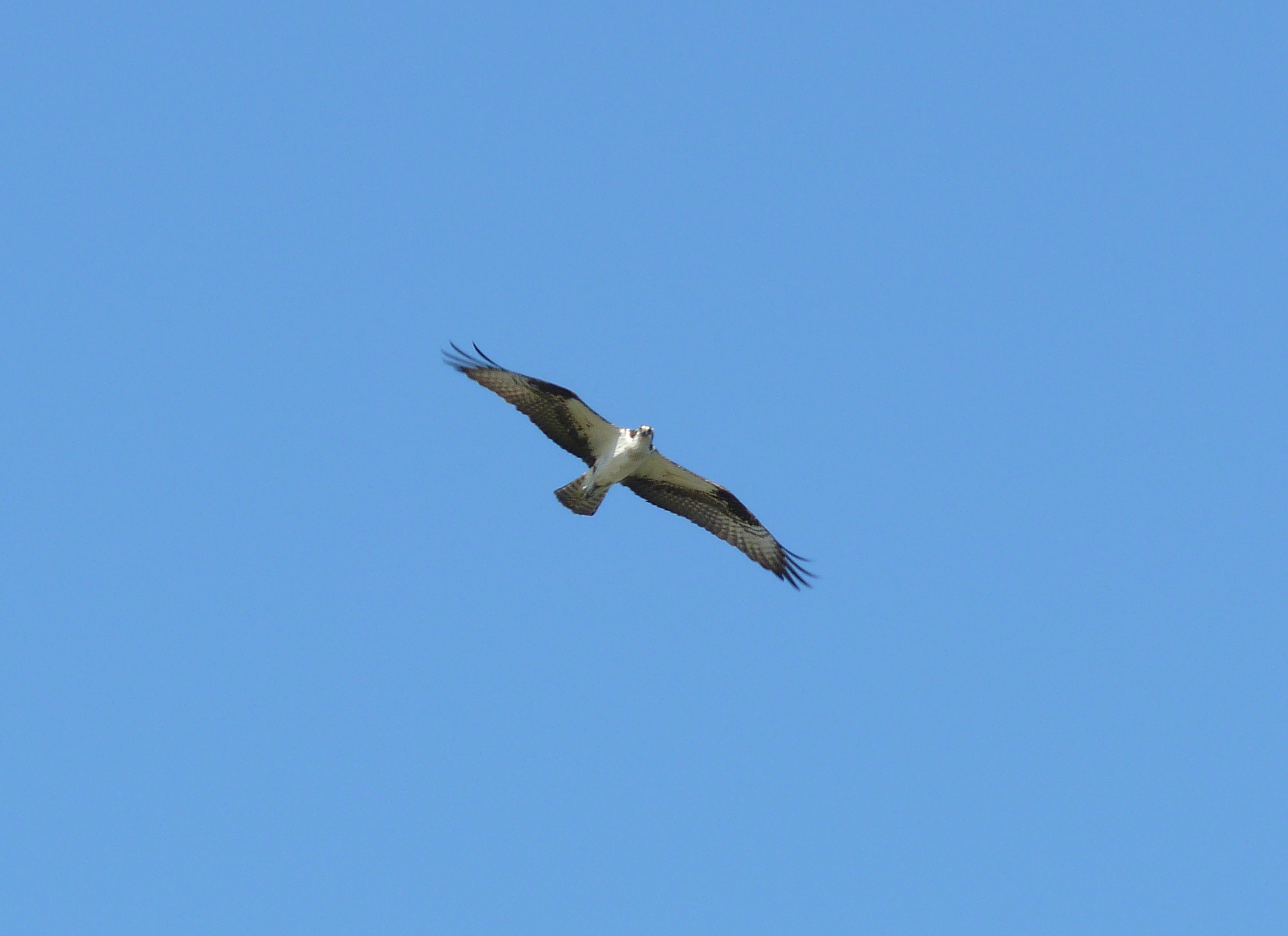
Here’s what an Osprey looks like when it’s soaring or on the hunt. Note the two-toned coloration, the long primary feathers at the tips of the wings and the small head relative to the wing length. Photo: Mark Bullinger
Osprey
One of the really grand birds we have during the late spring and summer is the Osprey. Also known as the Sea Hawk or Fish Eagle, they are big strong flyers that feed almost exclusively on fish. Here in southern Rhode Island we have several dozen nesting pairs. Perhaps you have seen an Osprey nest – they are large stick constructions, typically atop a phone pole or a purpose-built nesting platform. Osprey form devoted pairs and when the female is on the nest the male will often perch near by. Most Osprey platforms have a built-in perch for this very purpose.
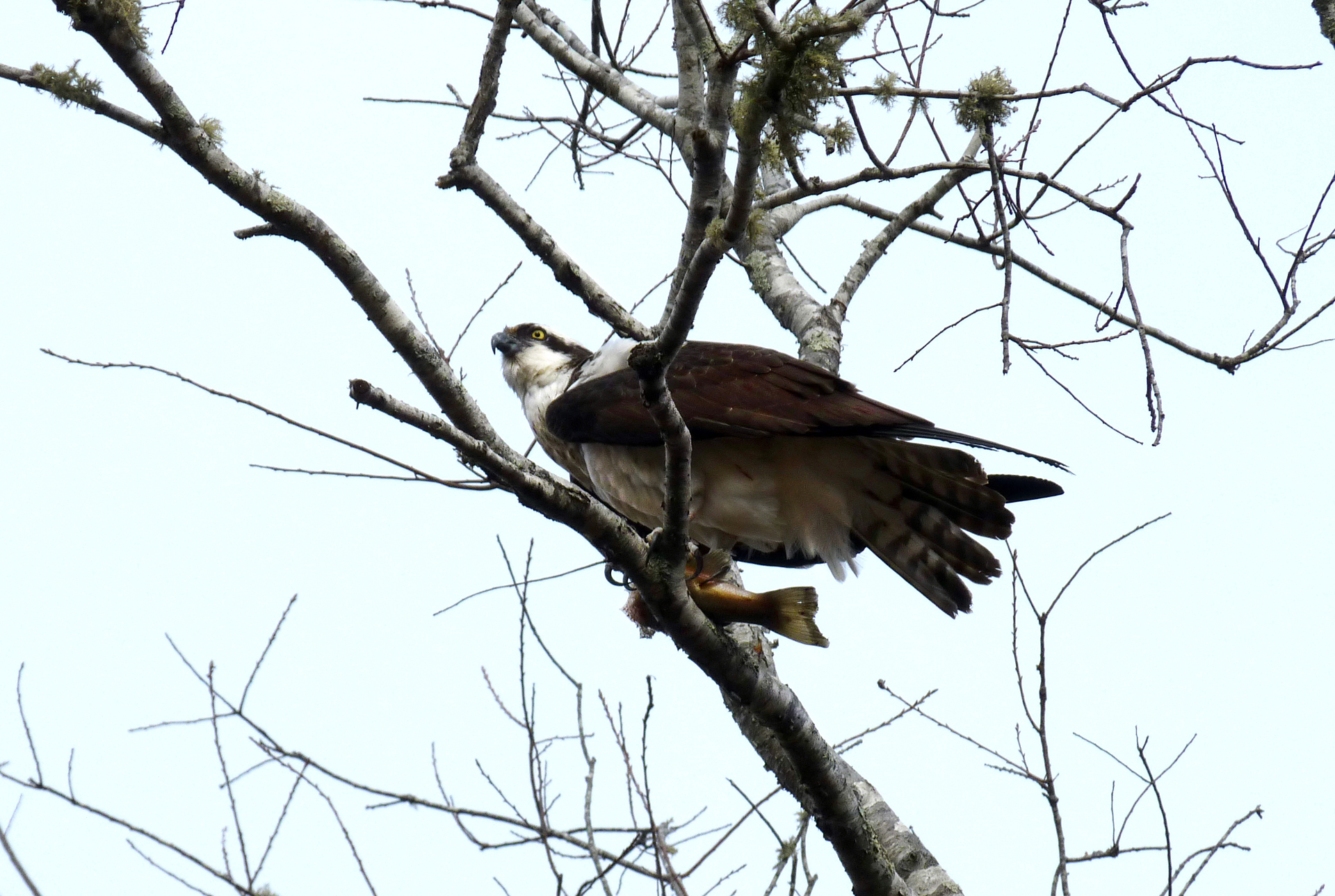
This picture was taken at Trustom Pond Refuge in Matunuck (one of my favorite places) in April, before there were hungry mouths to feed. At this stage the bird has a fish all to itself, but in several weeks it will work hard just to feed the chicks. Photo: Mark Bullinger
In our area, Ospreys begin arriving in late March. Ospreys typically mate for life and produce a clutch of two or three eggs per season. Chicks hatch in early June and quickly start crying out for food. During July we often see the chicks stretching their wings atop the nest, while mom and dad work double shifts to keep up with the insatiable appetites of the growing young bodies. As the young birds gain strength and confidence, they will test the wind under their wings by lifting a foot or two off the nest and then settling back down.
By early August the youngsters are close to full body weight and ready to fledge. Some will just up and go, while others need a little coaxing to take flight. At this time it is not uncommon to see a parent land at the nest with a fish, and then take right off again with the same fish. The young ones scream in protest, but often they take the bait, and their first flight. This past year, one of my tour groups watched the first clumsy flight of a fledgling as it circled the nest and then tried to land on a branch much too light for its weight - hardly a graceful act, but one of exquisite beauty. Over the waning weeks of summer the young will work out the details of flight, learn to fish from mom and dad, practice essential survival skills and build strength.
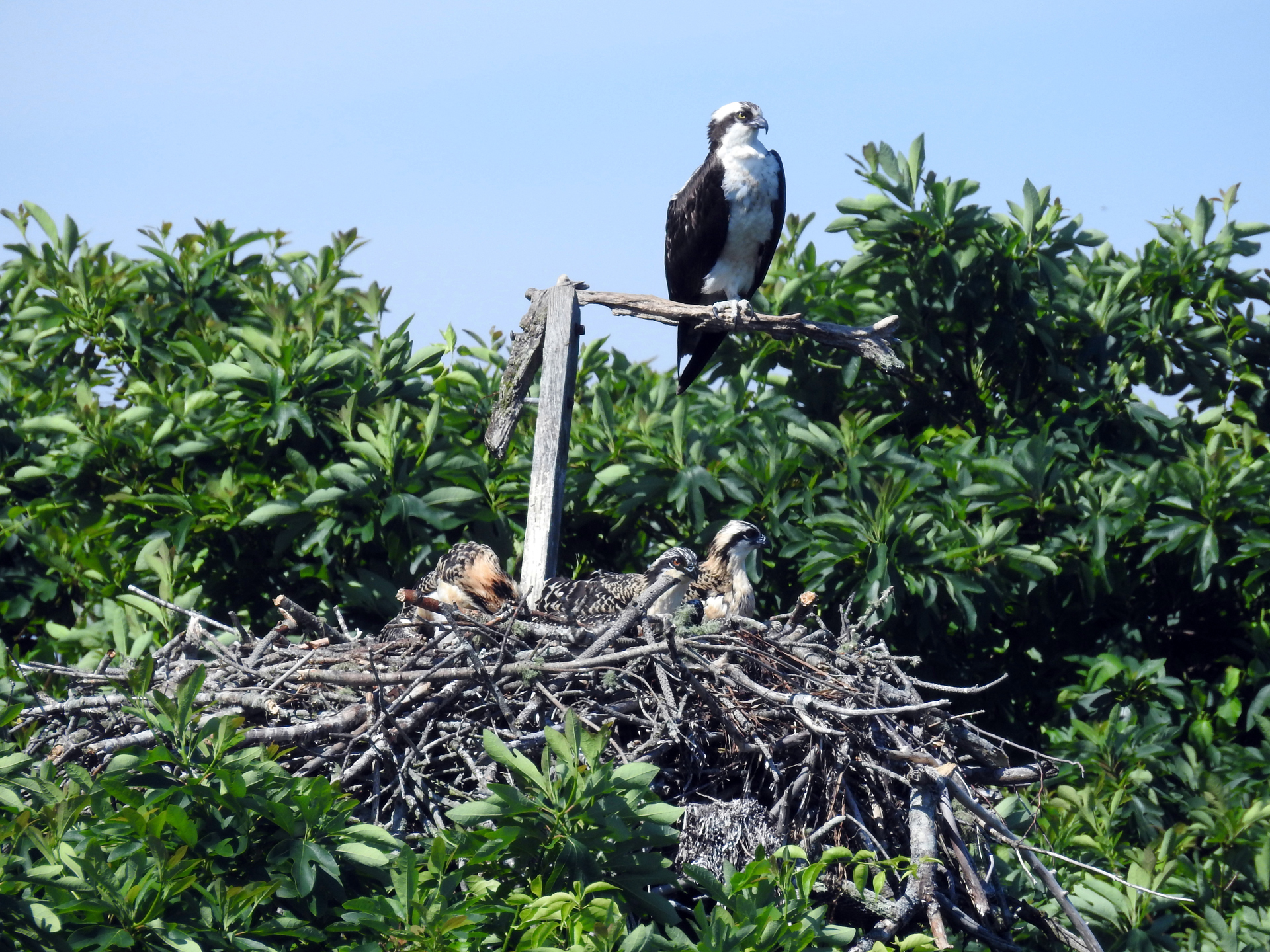
This picture provides a good look at the size of the Osprey’s stick nest. This one is constructed with branches from Japanese Black Pines that were planted along the barrier beach many decades ago to help prevent erosion. Super storm Sandy killed many of these trees, so there is a ready supply of fallen or easily broken branches for them to use. The Osprey also gathers fistfuls of dried seaweed to line the nest. Photo: Bert Bullock
Come early September adults start heading south, followed a month or so later by the young of the year. If fortunate, the later group will be swept along on the north winds of autumn and make good time down the eastern seaboard. Based on satellite-tracking studies, we know that many Osprey from our area cross from the Florida Keys to Cuba, then to the Dominican Republic and then on to South America. Quite a migration, and here’s the kicker: these birds that mate for life… they migrate separately. They spend the winter in separate areas of South America, they fly north separately, and then they reconnect back at the nest for another summer of family life. Often, when I tell this story, some long-married individual raises an eyebrow and dryly remarks, “well there’s the secret to a long relationship.”
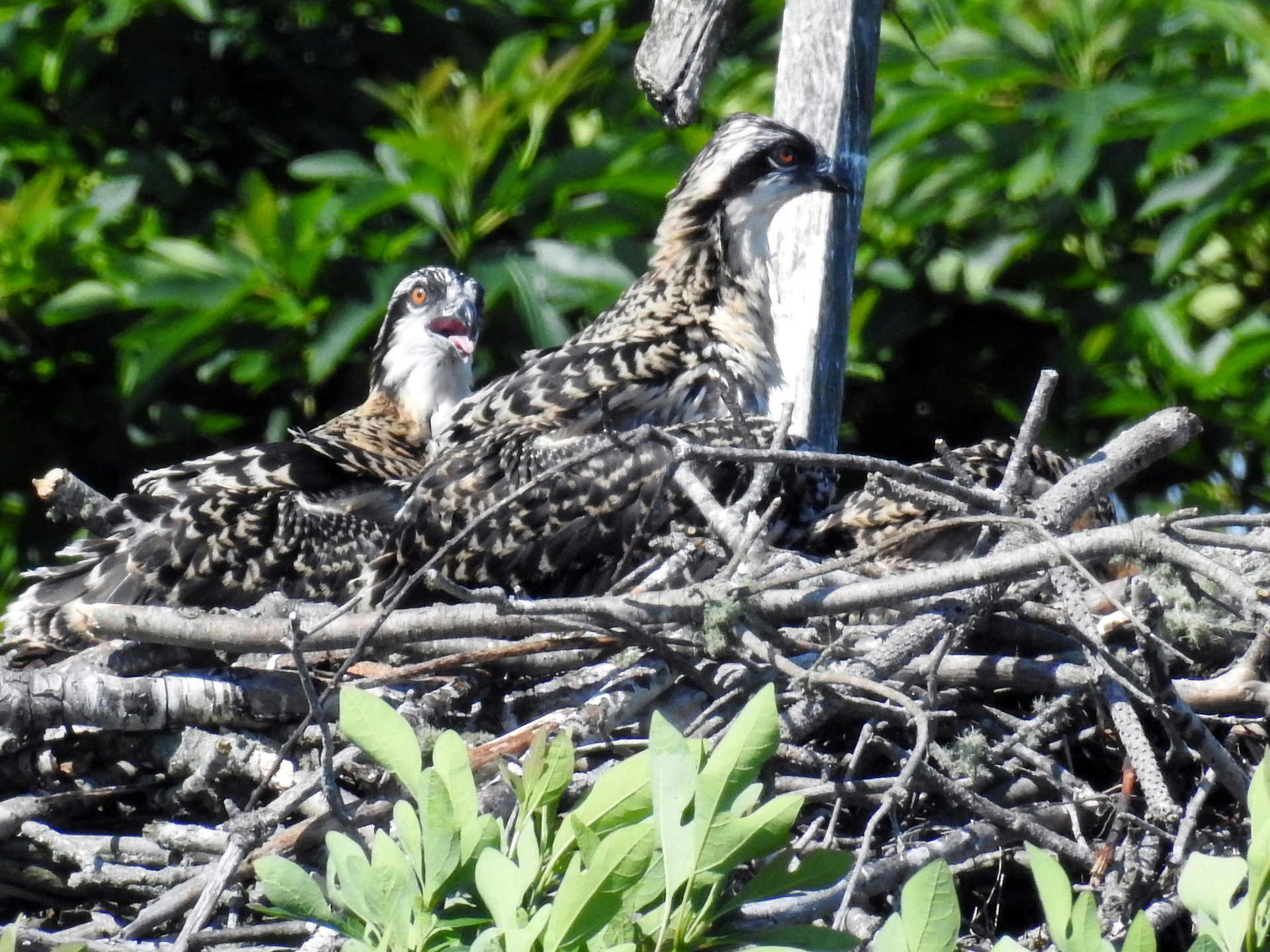
This image shot by Bert Bullock in mid July shows three juvenile Osprey at home in their stick nest. At this point they are eating like teenagers and growing fast. They are about two weeks from their first flight and stretching and flapping their wings regularly. Photo: Bert Bullock
The other thing that really amazes me is how predictable my first spotting will be each spring. For several years running my first Osprey sighting of the year has been on or within hours of March 28th. Two years ago it was the 28th; last year it was about 5pm on the 27th; and this year it was 8am on the 29th.
All of these observations and tidbits are great, but the best thing about the Osprey is watching it. It is impressive in flight and doubly impressive when on the feed. The Osprey is hawk-like in appearance, but with more of an elbow to its wing and longer wings relative to its body and head. It has a suppleness to the wing beat that once observed helps identify it at a distance. Ospreys are graceful flyers and when hunting they work their way into the wind to achieve extra lift, which allows them to fly slowly and methodically and scan the waters below for the silhouette of their next meal. When a fish is spotted the bird can hover for many seconds, while eagle eyes size up the prospect. If it’s game on, the bird folds its wings and streaks downward, extending its legs at the last moment and crashing feet first into the water with talons fully extended. If the hunt is successful, the osprey claws its way back into the sky carrying the weight of a fish dinner in the firm grasp of its talons. With fish slung underneath (always head-first), and looking a lot like an old WWII torpedo bomber, the Osprey lumbers back to the nest to feed the young’uns and perhaps have a bite itself.
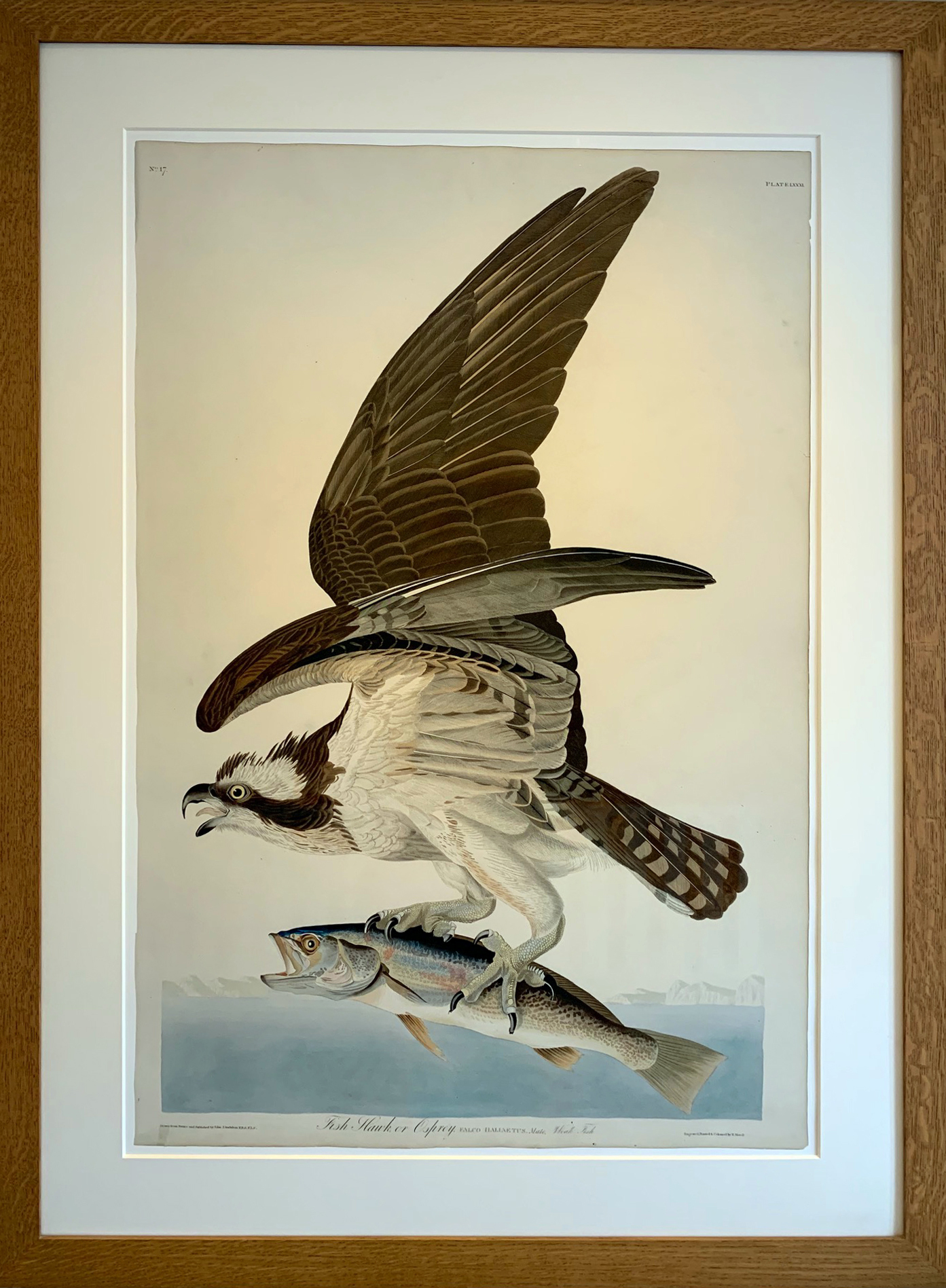
This stunning museum reproduction of John J. Audubon’s Osprey hangs in the lobby of the Weekapaug Inn and is a great reference. The shape of the wings, the plumage and markings, the blazing yellow eyes and the hooked beak open as if calling to its mate – it’s all there in exquisite detail. Note the length of the legs and the fearsome talons that can reach far below the surface to impale the target. Notice also how the fish is slung headfirst below the bird – an orientation you see every time. I suspect the Osprey attacks from behind and generally grabs the fish this way, but the headfirst orientation also makes for better aerodynamics. Print by John J. Audubon
Ospreys are impressive hunters, but they don’t rule the skies. A few years ago I watched an Osprey dive and catch a sizable fish. As it winged its way across the lagoon an eagle appeared in the distance. With the advantage of altitude the eagle drew in its wings and entered a shallow power dive. The Osprey beat its way toward the closest tree line, but with an enormous speed advantage the eagle overtook it just as it crossed over the land. The Osprey peeled off behind the trees of a wooded neighborhood followed by the eagle and several seconds later both birds swooped skyward, neither one with the fish. The Osprey had obviously jettisoned its catch to take life-saving evasive maneuvers and to this day I chuckle at the thought of some puzzled homeowner wondering how the heck a fish wound up in the front yard.
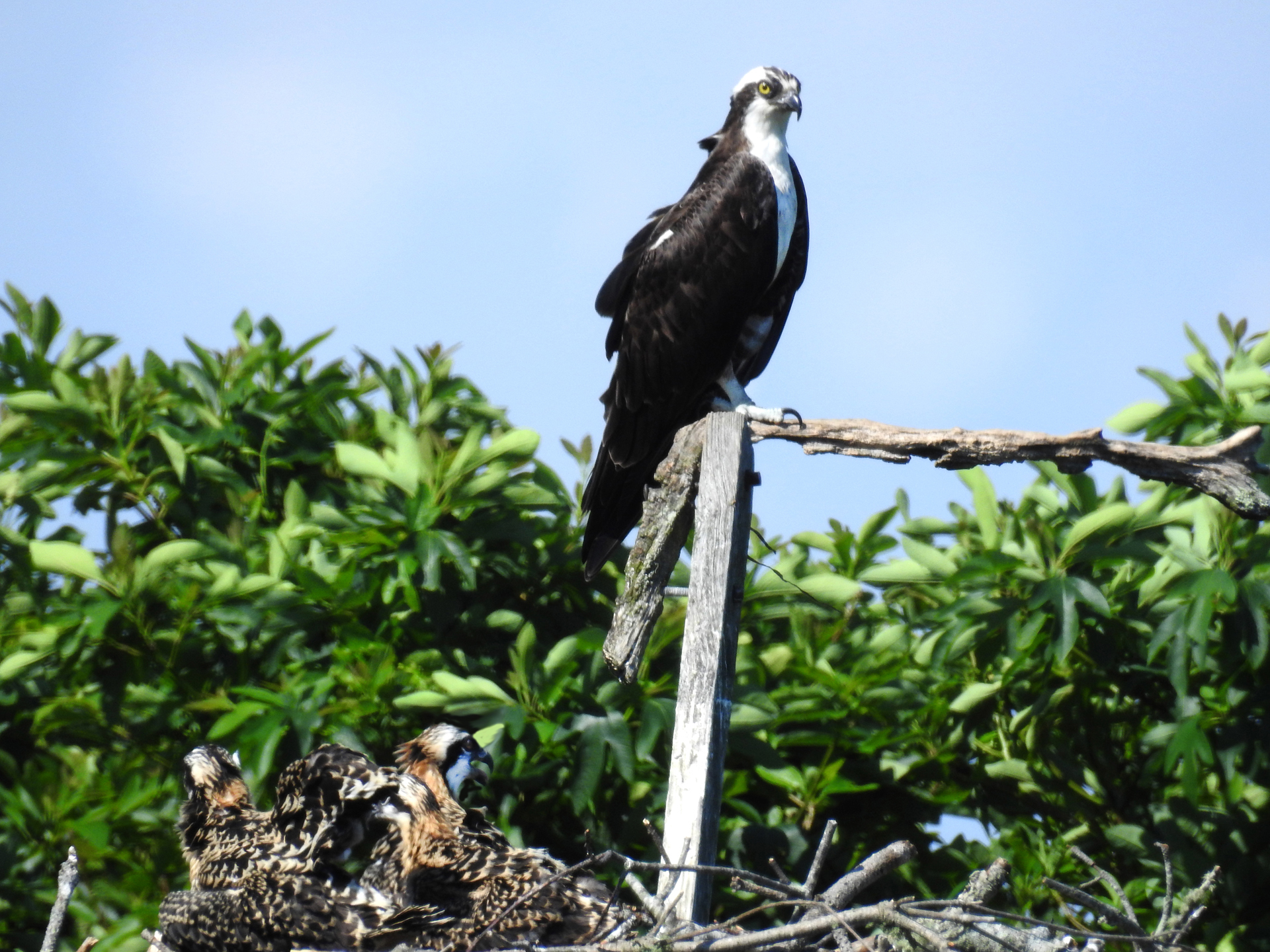
Another shot through a long lens from Bert’s high vantage point. In this image I suspect the mother is out hunting and Pops is keeping watch from his perch. He looks like all business! Photo Bert Bullock
Now that our Osprey population has returned from South America, why not come to Southern Rhode Island and spot one yourself? Enjoy one of our mile-long sandy beaches, or an evening cocktail with a water view, and if you keep your eyes skyward you will likely see one fly by. It will be a bird that has traveled a long way to get here; but you won’t have to… the beaches of Rhode Island are closer than you think
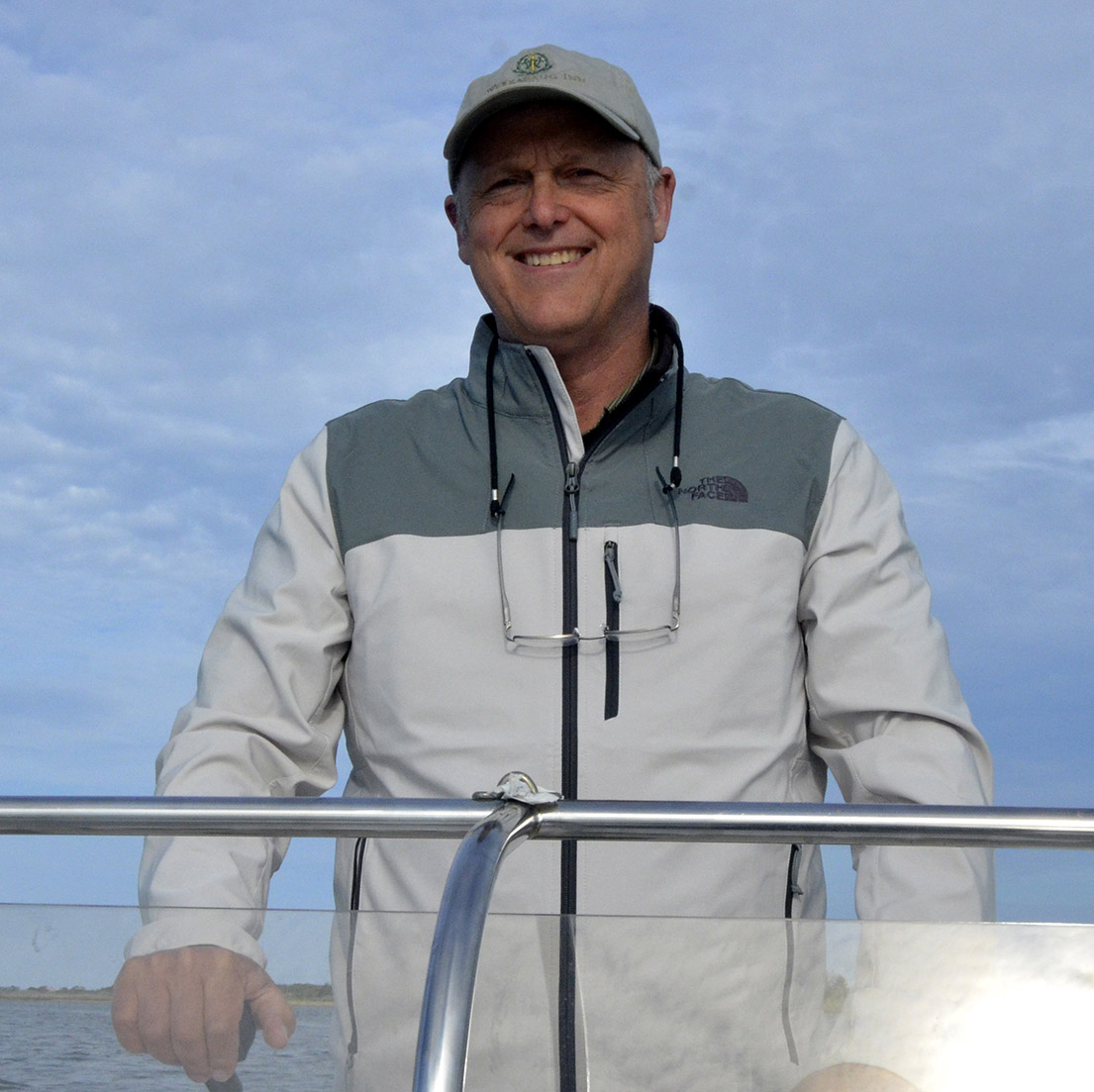
Mark Bullinger has been on and around the waters of South County Rhode Island all of his life. He is an enthusiastic fisherman, birder and general nature buff. Capt. Mark, as he is often called, has led over two-thousand guided outings in southern Rhode Island via motorboats, kayaks, vans and on foot. Mark was the Executive Director of Salt Ponds Coalition for five years and has been the resident naturalist at the Weekapaug Inn since 2012.


